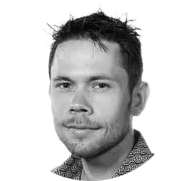April 2023, no. 135
Create a MARIN account to stay updated

Report

NaturSea-PV
The main objective of
NaturSea-PV is to improve the overall lifetime, reliability and maintainability of marine supporting structures for offshore floating PVs, and thus reduce their Levelised Cost of Energy (LCOE).
In line with this, the NaturSea-PV JIP will develop innovative structural designs capable of handling the marine conditions, while at the same time ensuring their durability and minimising decommissioning costs. In this project MARIN will develop hydro-elastic simulations which predict the wave induced motions and structural stresses. The model is set up in a parametric way so many design variations can be systematically analysed. Optimisation routines will search for favourable combinations of stiffness, column spacing, buoyancy and inertia. By carefully considering all the parameters in the design, wave induced structural stresses can be reduced, which ultimately leads to an improvement of the survivability and lifespan of the floater. MARIN will perform model tests with a flexible scale model which will validate the hydro-elastic simulations.
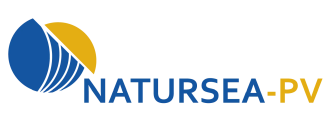
SUREWAVE
The SUREWAVE project
(2022 - 2025) aims to develop and test an innovative floating solar panel system for offshore environments.
The concept consists of an external floating breakwater structure made of new circular materials acting as a protection against severe wave loads on the structure itself, leading to increased operational availability and energy output. Within the first months of the project, the basic design was formulated, and potential field sites were selected. In the upcoming months, the design will be further developed together with other consortium members. MARIN will support the design development through early-concept wave basin tests, design optimisation using low-fidelity numerical tools, and CFD analysis of extreme wave and wind loading in survival sea states. MARIN will focus on the design of the surface mooring between the breakwater and PV modules, and on the PV interconnectors. And the final design will be tested at model scale in MARIN’s basins.
Solar@SeaIII
The Solar@SeaIII project focuses on developing and de-risking the large-scale deployment of lightweight, flexible floating solar energy plants. To explore this technology further an offshore pilot project is set to take place mid-2024 in a location with high wave exposure in the North Sea. Innovative technologies will be tested, and extensive monitoring will take place. At the end of this project the concept will reach level Technology Readiness Level 7, whereby a demonstrator has proven reliability in an operational environment. Prior to this, scaled basin tests will be carried out by MARIN in their basins. MARIN will also be responsible for the design and installation of a monitoring system for the loading on and response of the floaters. Genap and Bluewater will develop the floater prototypes. Bluewater will develop the mooring system, and Jifmar Offshore Services is responsible for its installation and decommissioning. An antifouling strategy for the floaters will be developed by Endures. TNO is responsible for the configuration and electrical monitoring of the solar panels and research of the durability of the system.
The project is carried out with Topsector Energiesubsidie of the ‘Ministerie van Economische Zaken’.
Image: TNO
In the last five years, several floating solar concepts have been tested at MARIN’s basin facilities. The small payload and large span of surface area make floating solar different from existing offshore floaters. With an average payload of less than 100kg per square metre, this only adds a couple of centimetres to the draught of the floaters. This facilitates lightweight constructions, which are also necessary from a cost perspective. However, with production in the order of a megawatt per hectare, large areas are needed in order to have a significant energy yield.
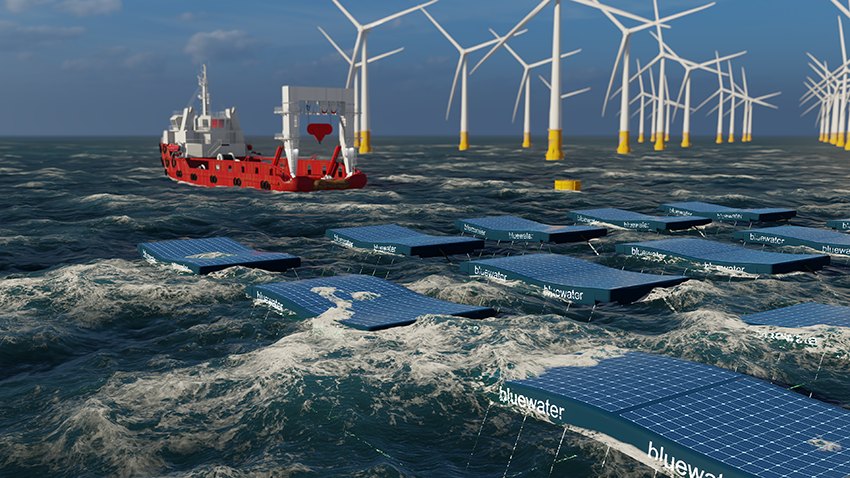
Flexible constructions
The combination of lightweight constructions with a large span inevitably results in flexible constructions, which are either continuously flexible or flexible in segments. This brings new challenges for model-scale basin testing. Lightweight constructions become even lighter when produced at model scale. An additional complexity is the scaling of the bending flexibility, which does not scale properly if the construction’s cross-sections are geometrically scaled.
Additionally, numerical simulations of floating solar constructions in wind, waves and current are necessary for designers in order to be able to optimise their floating concepts. The traditional approach for the analysis of moored offshore constructions is based on linearised potential flow diffraction calculations. The validity of such an approach for these large, lightweight and flexible floating solar constructions needs careful examination and validation with model test data. That tedious task is currently in progress at MARIN, which is combining model test data and numerical simulations from multiple floating solar projects in order to obtain a better understanding.
Fresh insight
In 2017 the first full-scale measurement campaign on four viable concepts was conducted at the Slufter Maasvlakte. Each system had a capacity of 50kWp. The measurement campaign has provided significant new knowledge about failure modes and design parameters. This was used in a follow-up project where three concepts were deployed at the Oostvoornse meer (lake) when the hydrodynamic behaviour, as well as the performance of the systems, was measured. Under the generally benign conditions the systems performed well, and the project has provided fresh insight for future designs.
More than 70% of the surface of our blue planet is covered with water. The Netherlands lies on a river delta and is inextricably linked to the sea. Floating solutions offer space at a time of rising sea levels and overpopulated areas. Over the past decade, MARIN has contributed to the development of floating solar panels. Our aim is to work on low technology readiness concepts and innovations and openly share these with industry and academia.
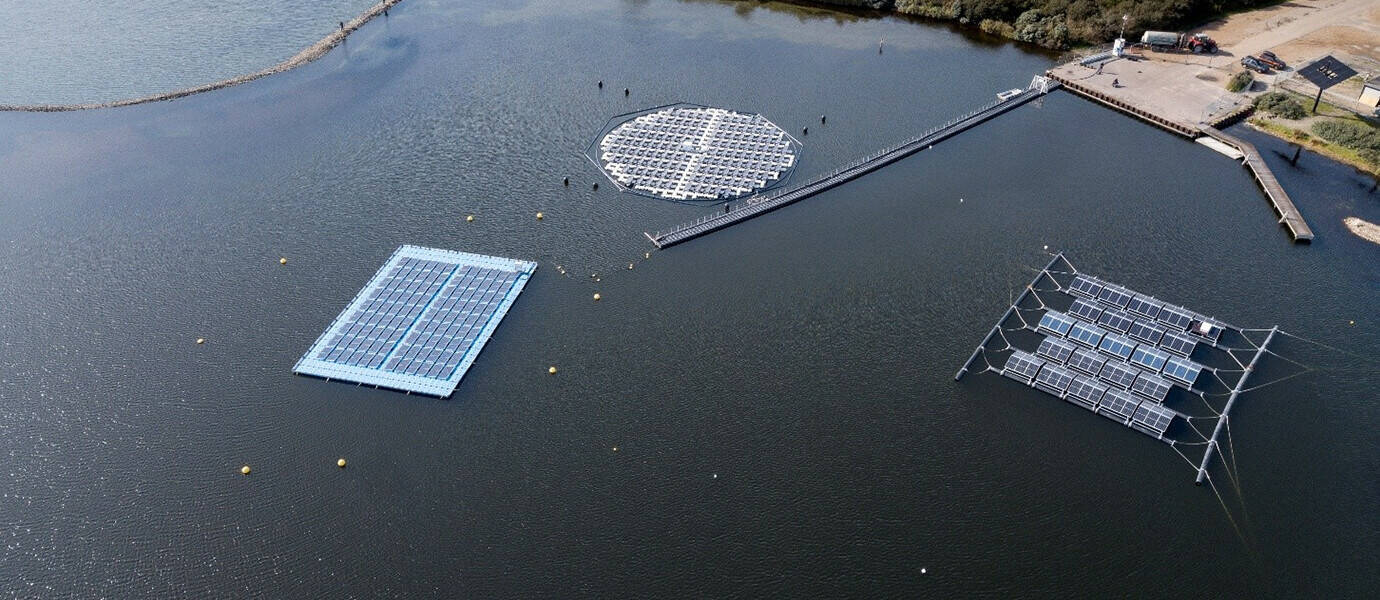
More info:








Image: TNO
April 2023, no. 135








More info:

NaturSea-PV
The main objective of
NaturSea-PV is to improve the overall lifetime, reliability and maintainability of marine supporting structures for offshore floating PVs, and thus reduce their Levelised Cost of Energy (LCOE).
In line with this, the NaturSea-PV JIP will develop innovative structural designs capable of handling the marine conditions, while at the same time ensuring their durability and minimising decommissioning costs. In this project MARIN will develop hydro-elastic simulations which predict the wave induced motions and structural stresses. The model is set up in a parametric way so many design variations can be systematically analysed. Optimisation routines will search for favourable combinations of stiffness, column spacing, buoyancy and inertia. By carefully considering all the parameters in the design, wave induced structural stresses can be reduced, which ultimately leads to an improvement of the survivability and lifespan of the floater. MARIN will perform model tests with a flexible scale model which will validate the hydro-elastic simulations.

SUREWAVE
The SUREWAVE project
(2022 - 2025) aims to develop and test an innovative floating solar panel system for offshore environments.
The concept consists of an external floating breakwater structure made of new circular materials acting as a protection against severe wave loads on the structure itself, leading to increased operational availability and energy output. Within the first months of the project, the basic design was formulated, and potential field sites were selected. In the upcoming months, the design will be further developed together with other consortium members. MARIN will support the design development through early-concept wave basin tests, design optimisation using low-fidelity numerical tools, and CFD analysis of extreme wave and wind loading in survival sea states. MARIN will focus on the design of the surface mooring between the breakwater and PV modules, and on the PV interconnectors. And the final design will be tested at model scale in MARIN’s basins.
Solar@SeaIII
The Solar@SeaIII project focuses on developing and de-risking the large-scale deployment of lightweight, flexible floating solar energy plants. To explore this technology further an offshore pilot project is set to take place mid-2024 in a location with high wave exposure in the North Sea. Innovative technologies will be tested, and extensive monitoring will take place. At the end of this project the concept will reach level Technology Readiness Level 7, whereby a demonstrator has proven reliability in an operational environment. Prior to this, scaled basin tests will be carried out by MARIN in their basins. MARIN will also be responsible for the design and installation of a monitoring system for the loading on and response of the floaters. Genap and Bluewater will develop the floater prototypes. Bluewater will develop the mooring system, and Jifmar Offshore Services is responsible for its installation and decommissioning. An antifouling strategy for the floaters will be developed by Endures. TNO is responsible for the configuration and electrical monitoring of the solar panels and research of the durability of the system.
The project is carried out with Topsector Energiesubsidie of the ‘Ministerie van Economische Zaken’.
Flexible constructions
The combination of lightweight constructions with a large span inevitably results in flexible constructions, which are either continuously flexible or flexible in segments. This brings new challenges for model-scale basin testing. Lightweight constructions become even lighter when produced at model scale. An additional complexity is the scaling of the bending flexibility, which does not scale properly if the construction’s cross-sections are geometrically scaled.
Additionally, numerical simulations of floating solar constructions in wind, waves and current are necessary for designers in order to be able to optimise their floating concepts. The traditional approach for the analysis of moored offshore constructions is based on linearised potential flow diffraction calculations. The validity of such an approach for these large, lightweight and flexible floating solar constructions needs careful examination and validation with model test data. That tedious task is currently in progress at MARIN, which is combining model test data and numerical simulations from multiple floating solar projects in order to obtain a better understanding.
Fresh insight
In 2017 the first full-scale measurement campaign on four viable concepts was conducted at the Slufter Maasvlakte. Each system had a capacity of 50kWp. The measurement campaign has provided significant new knowledge about failure modes and design parameters. This was used in a follow-up project where three concepts were deployed at the Oostvoornse meer (lake) when the hydrodynamic behaviour, as well as the performance of the systems, was measured. Under the generally benign conditions the systems performed well, and the project has provided fresh insight for future designs.
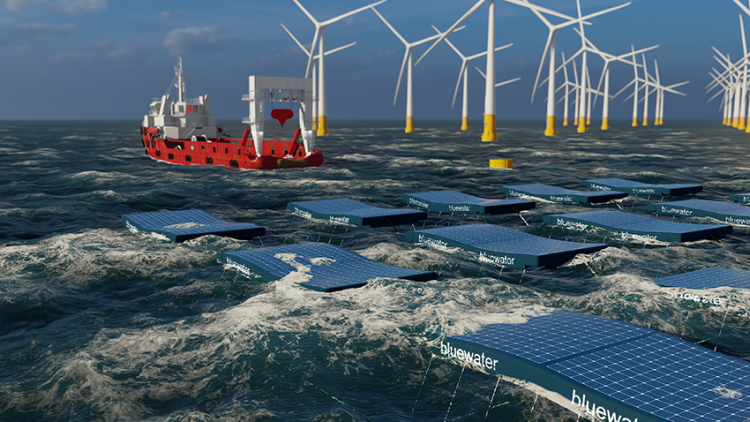
In the last five years, several floating solar concepts have been tested at MARIN’s basin facilities. The small payload and large span of surface area make floating solar different from existing offshore floaters. With an average payload of less than 100kg per square metre, this only adds a couple of centimetres to the draught of the floaters. This facilitates lightweight constructions, which are also necessary from a cost perspective. However, with production in the order of a megawatt per hectare, large areas are needed in order to have a significant energy yield.
More than 70% of the surface of our blue planet is covered with water. The Netherlands lies on a river delta and is inextricably linked to the sea. Floating solutions offer space at a time of rising sea levels and overpopulated areas. Over the past decade, MARIN has contributed to the development of floating solar panels. Our aim is to work on low technology readiness concepts and innovations and openly share these with industry and academia.

Report





